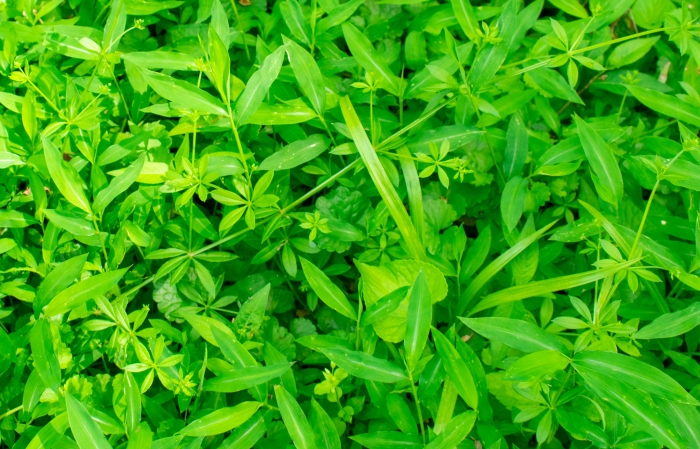Fragrant Bedstraw
(Galium triflorum)
Fragrant Bedstraw (Galium triflorum)
/
/

© Whitney Mattila
CC BY-SA 4.0
Image By:
© Whitney Mattila
Recorded By:
Copyright:
CC BY-SA 4.0
Copyright Notice:
Photo by: © Whitney Mattila | License Type: CC BY-SA 4.0 | License URL: http://creativecommons.org/licenses/by-sa/4.0/ | Uploader: tanyuu | Publisher: iNaturalist |














Estimated Native Range
Summary
Galium triflorum, commonly known as Fragrant Bedstraw, is a perennial herb native to a variety of habitats including moist deciduous forests, mixed woodlands, forest edges, and shaded riparian zones in northern Europe, eastern Asia, the Middle East, and North America. It typically grows to a height of 6-24 inches (15-60 cm) and spreads via stolons, forming a mat-like ground cover. The plant features whorled leaves in groups of six and produces small, white, inconspicuous flowers from late spring to early summer. The flowers are followed by single, two-lobed fruiting peduncles. Fragrant Bedstraw is known for its pleasant scent, especially when dried, and its foliage that turns bronze in the fall.
Fragrant Bedstraw is valued for its ability to cover ground quickly, making it useful for erosion control and as a filler in shaded garden areas or woodland settings. It requires minimal maintenance, thriving in part shade to full shade and preferring moist, well-drained soils. While it is not typically grown for its flowers, which are not particularly showy, its aromatic quality when dried makes it a traditional choice for freshening linens and repelling pests in stored clothing. However, it is considered a noxious weed in several northeastern US states due to its aggressive spreading habit. Gardeners should be cautious when introducing it to their landscapes and consider its potential invasiveness.CC BY-SA 4.0
Fragrant Bedstraw is valued for its ability to cover ground quickly, making it useful for erosion control and as a filler in shaded garden areas or woodland settings. It requires minimal maintenance, thriving in part shade to full shade and preferring moist, well-drained soils. While it is not typically grown for its flowers, which are not particularly showy, its aromatic quality when dried makes it a traditional choice for freshening linens and repelling pests in stored clothing. However, it is considered a noxious weed in several northeastern US states due to its aggressive spreading habit. Gardeners should be cautious when introducing it to their landscapes and consider its potential invasiveness.CC BY-SA 4.0
Plant Description
- Plant Type: Herb, Vine
- Height: 0.5-2.5 feet
- Width: 2-3 feet
- Growth Rate: Moderate
- Flower Color: White
- Flowering Season: Spring, Summer, Fall
- Leaf Retention: Semi-deciduous
Growth Requirements
- Sun: Part Shade, Full Shade
- Water: Medium
- Drainage: Medium
Common Uses
Bee Garden, Butterfly Garden, Deer Resistant, Erosion Control, Fragrant, Low Maintenance
Natural Habitat
Moist deciduous forests, mixed woodlands, forest edges, and shaded riparian zones
Other Names
Common Names: Sweet-scented Bedstraw, Three-flower Bedstraw, Sweet Bedstraw
Scientific Names: , Galium triflorum, Asperula galioides, Galium brachiatum, Galium bryophilum, Galium bryophilum, Galium bryophyllum, Galium cuspidatum, Galium gratum, Galium jalapense
GBIF Accepted Name: